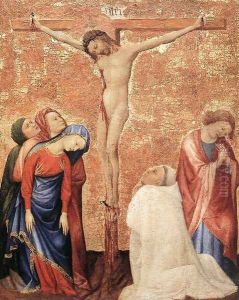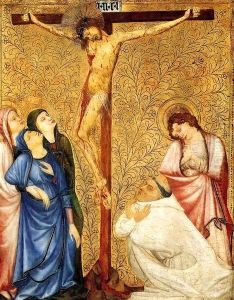Jean de Beaumetz Paintings
Jean de Beaumetz was a French Gothic painter who lived during the 14th century, a period characterized by significant developments in art and a departure from the Byzantine style that had previously dominated European art. Born around 1335, de Beaumetz's early life and training are not thoroughly documented, but it is known that he became a prominent figure in the Burgundian court, serving under Philip the Bold, Duke of Burgundy.
Jean de Beaumetz is most renowned for his role as a court painter, where he worked on a variety of commissions, including altarpieces, panel paintings, and perhaps even manuscript illumination, although no surviving manuscripts are attributed to him with certainty. His style is known for its refined elegance and attention to detail, which was in keeping with the International Gothic style that was spreading throughout Europe at the time.
One of his most significant contributions was the decoration of the Carthusian monastery of Champmol near Dijon, which was founded by Philip the Bold. The monastery was intended as a dynastic burial place for the Valois Dukes of Burgundy, and de Beaumetz was tasked with creating a series of panel paintings for the monks' cells. Unfortunately, most of these works have not survived, but records indicate that they were highly regarded for their piety and artistry.
De Beaumetz's work was characterized by a sense of realism and naturalism that anticipated some of the changes that would later become more pronounced in the Renaissance. Even though the majority of his artworks have been lost over the centuries, he is remembered as an important figure in the development of Early Netherlandish painting.
Jean de Beaumetz died in 1396. Despite the fact that his surviving body of work is small, his influence persisted through his pupils and the continued patronage of the Burgundian court, which played a critical role in the advancement of Northern European art.

